
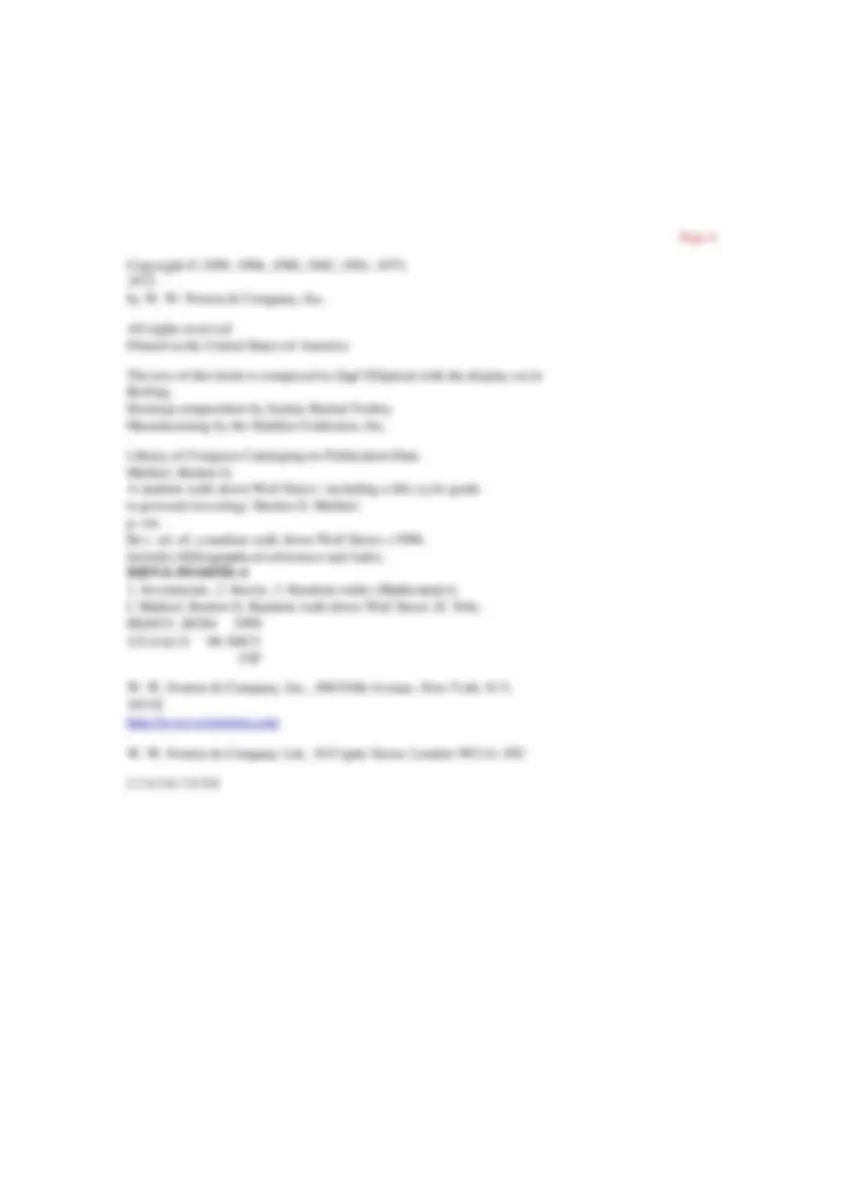


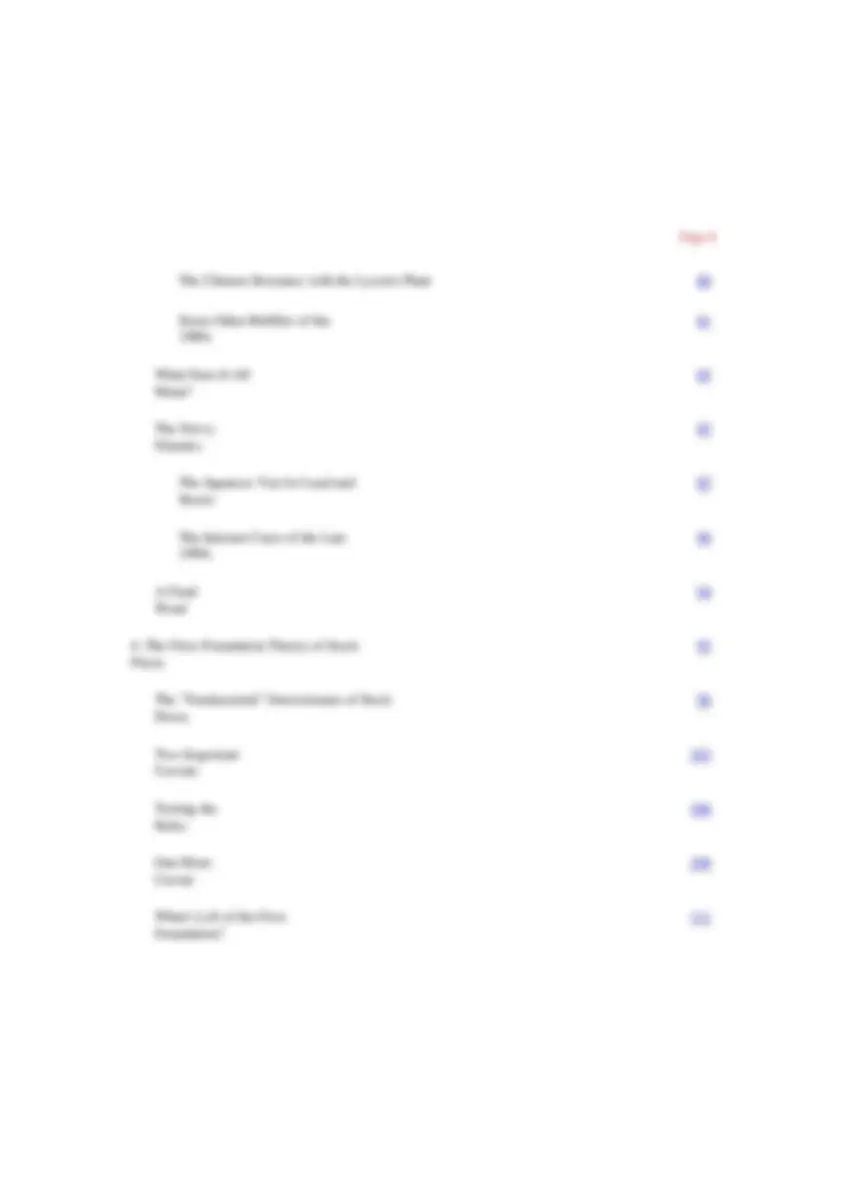
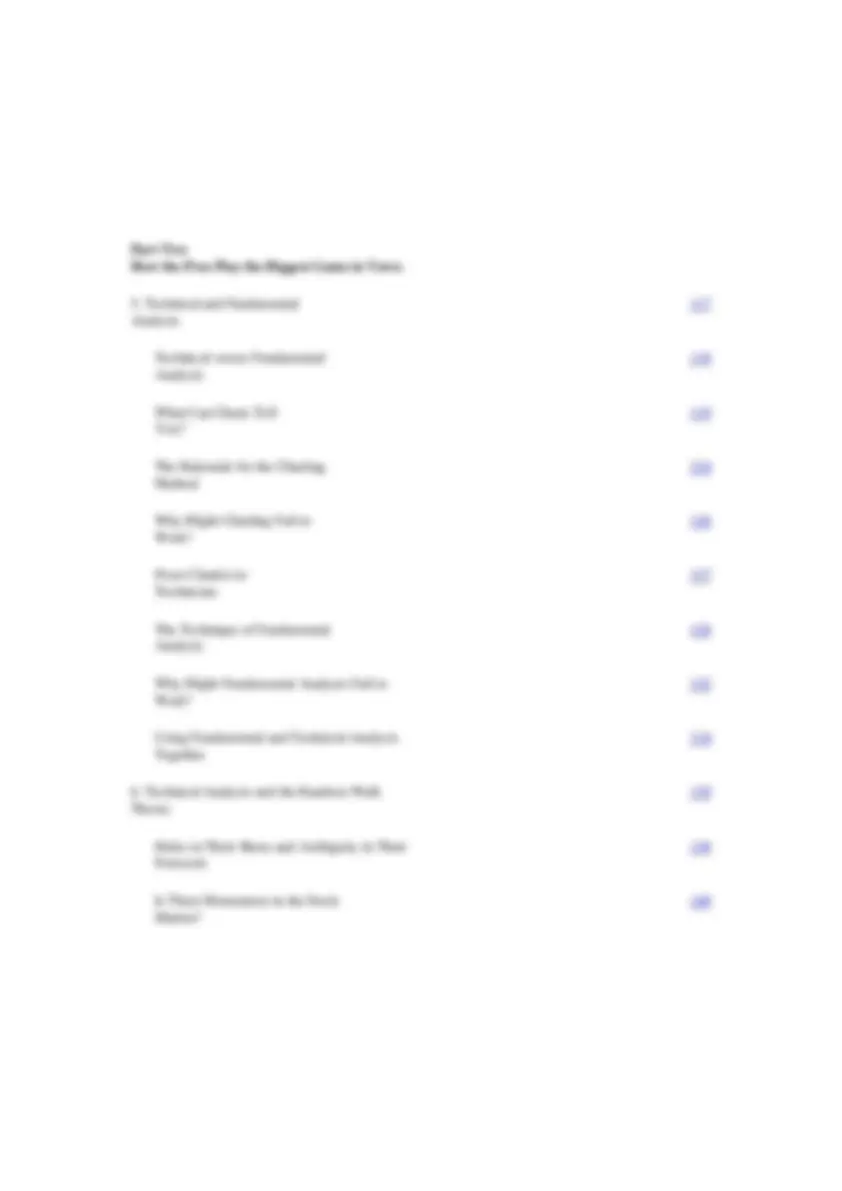

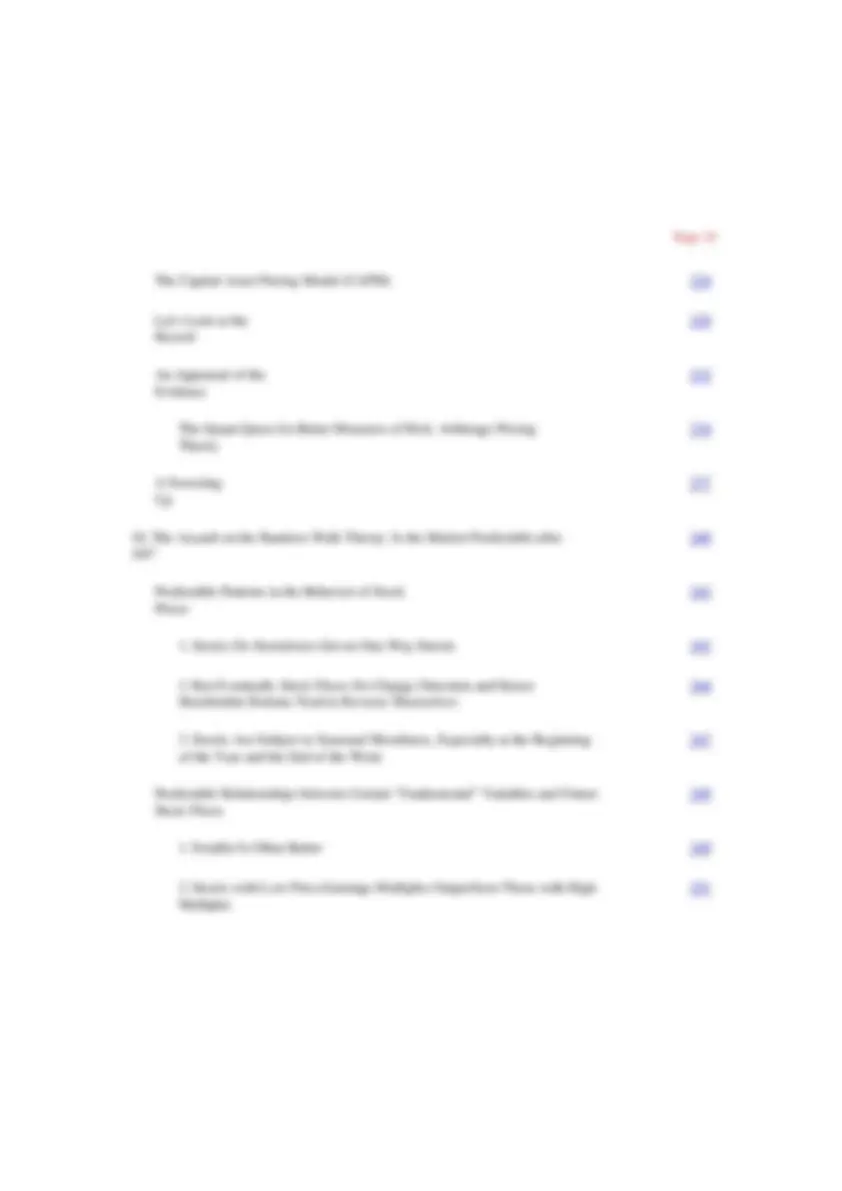
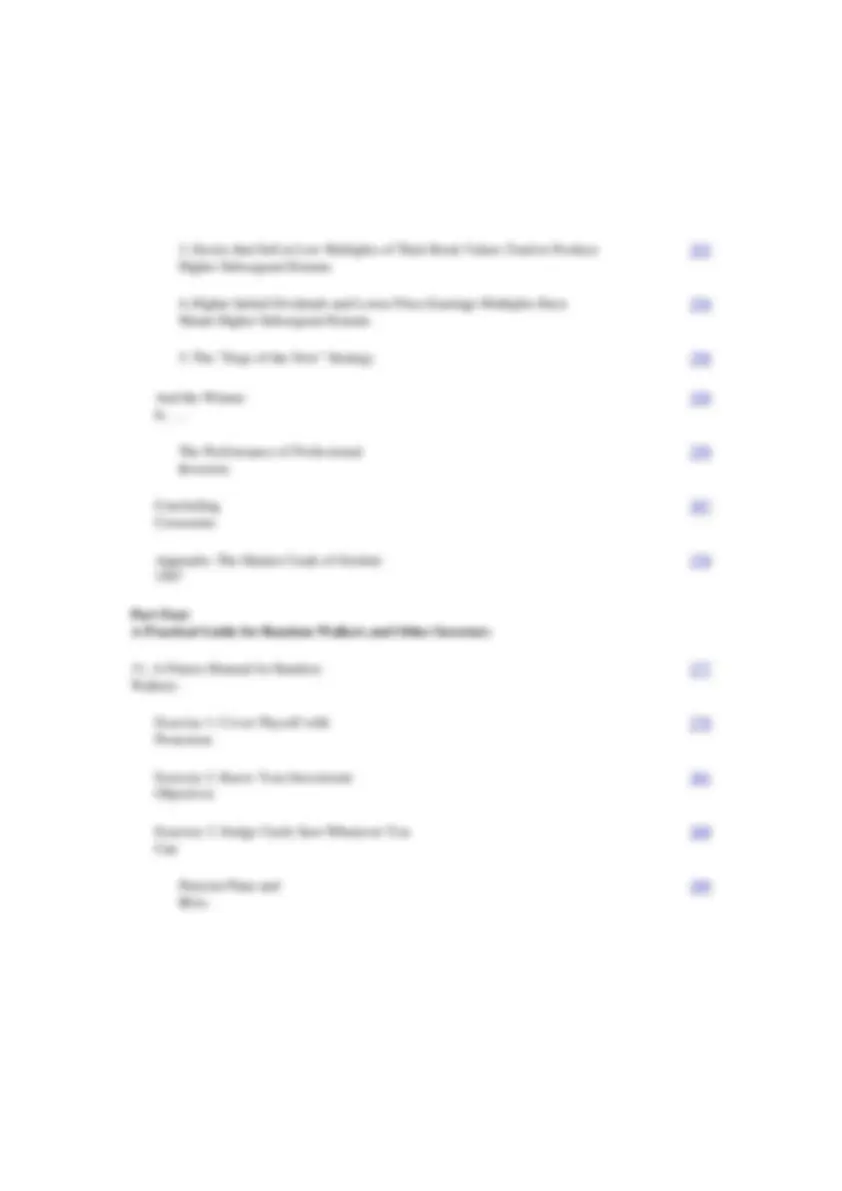

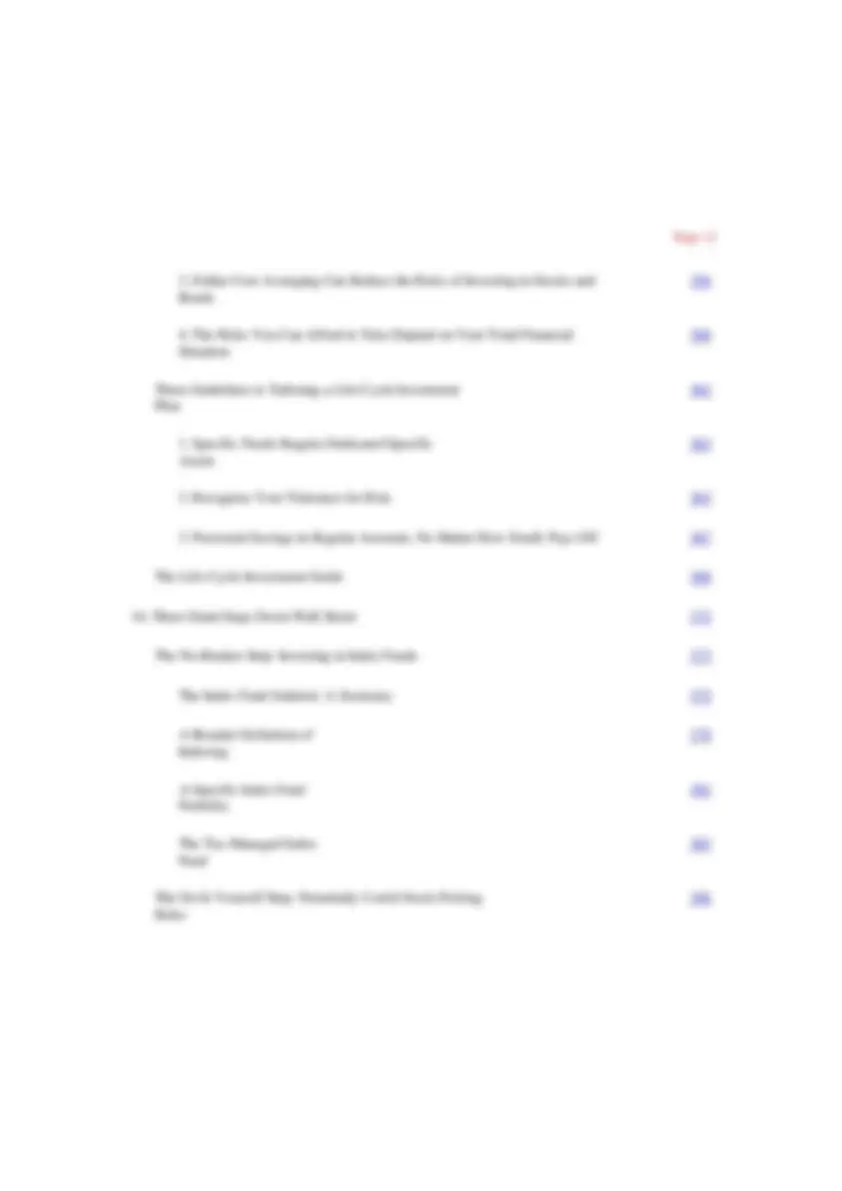


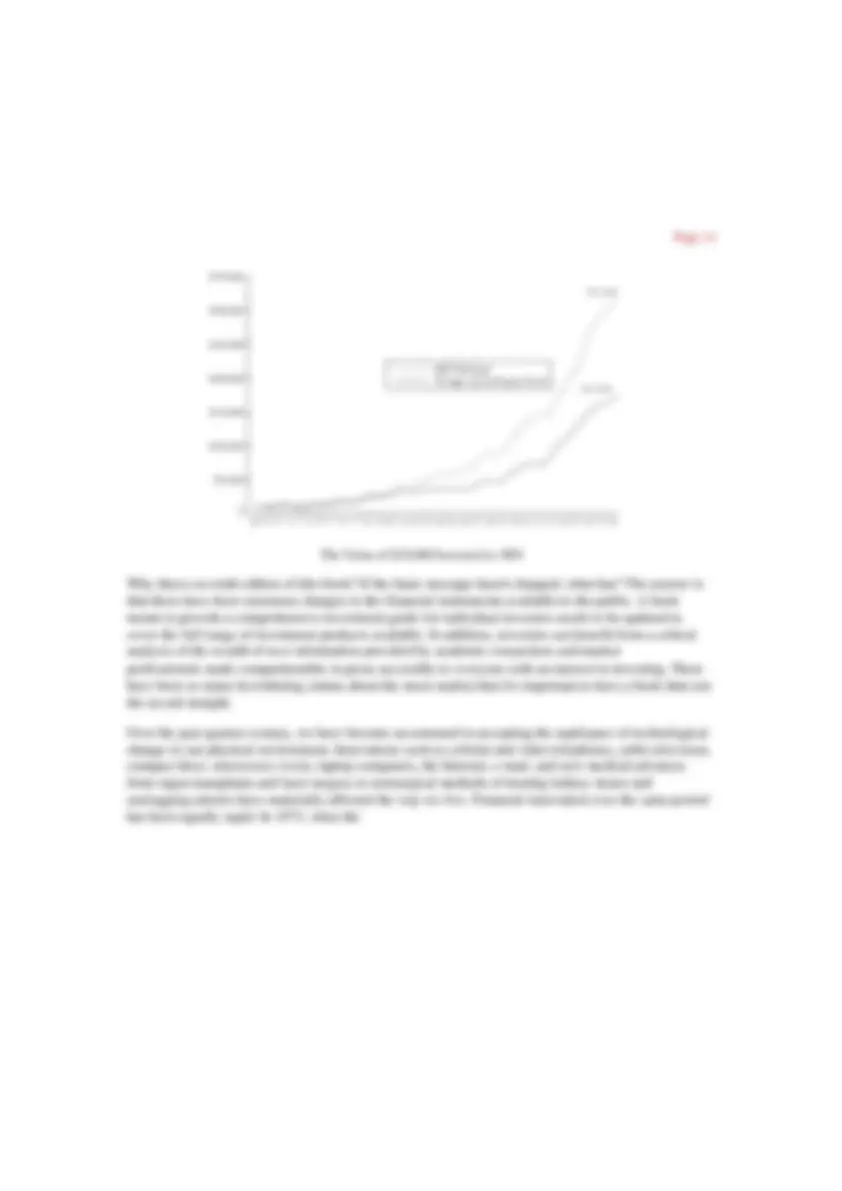










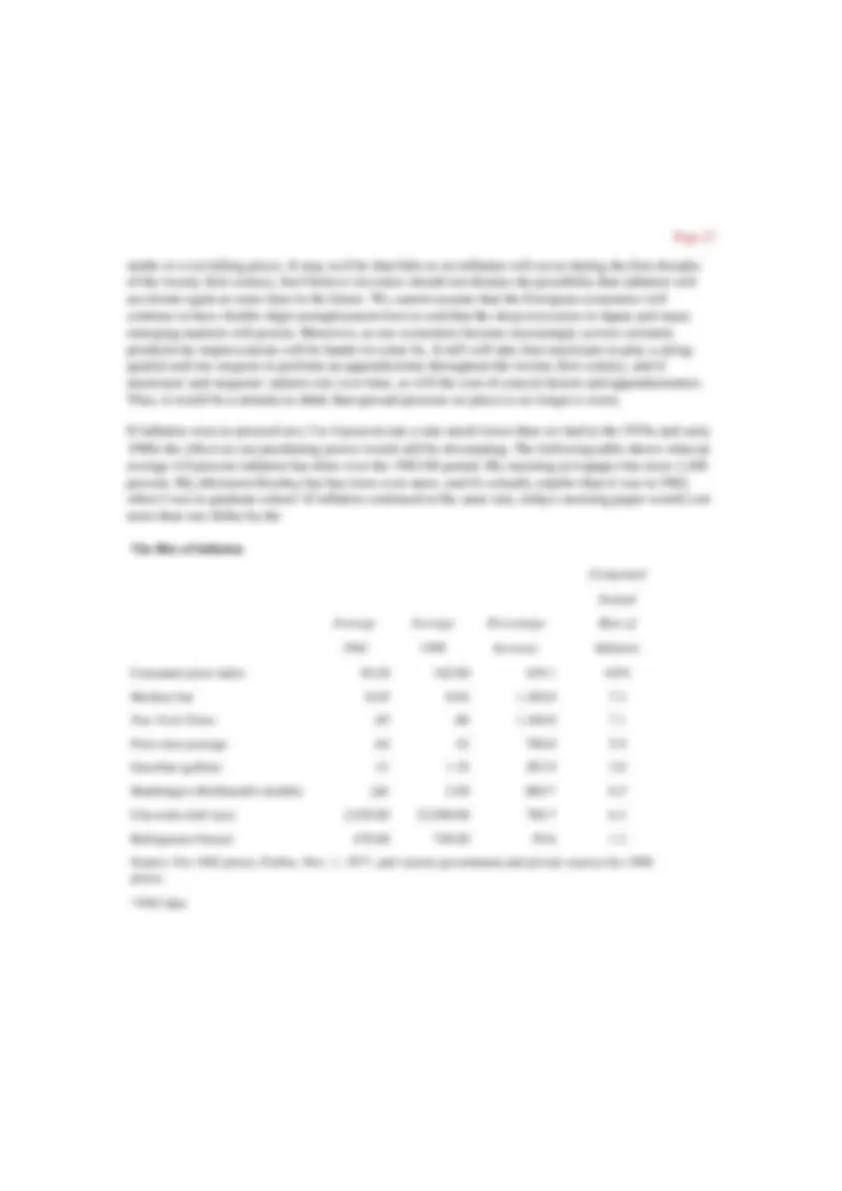




















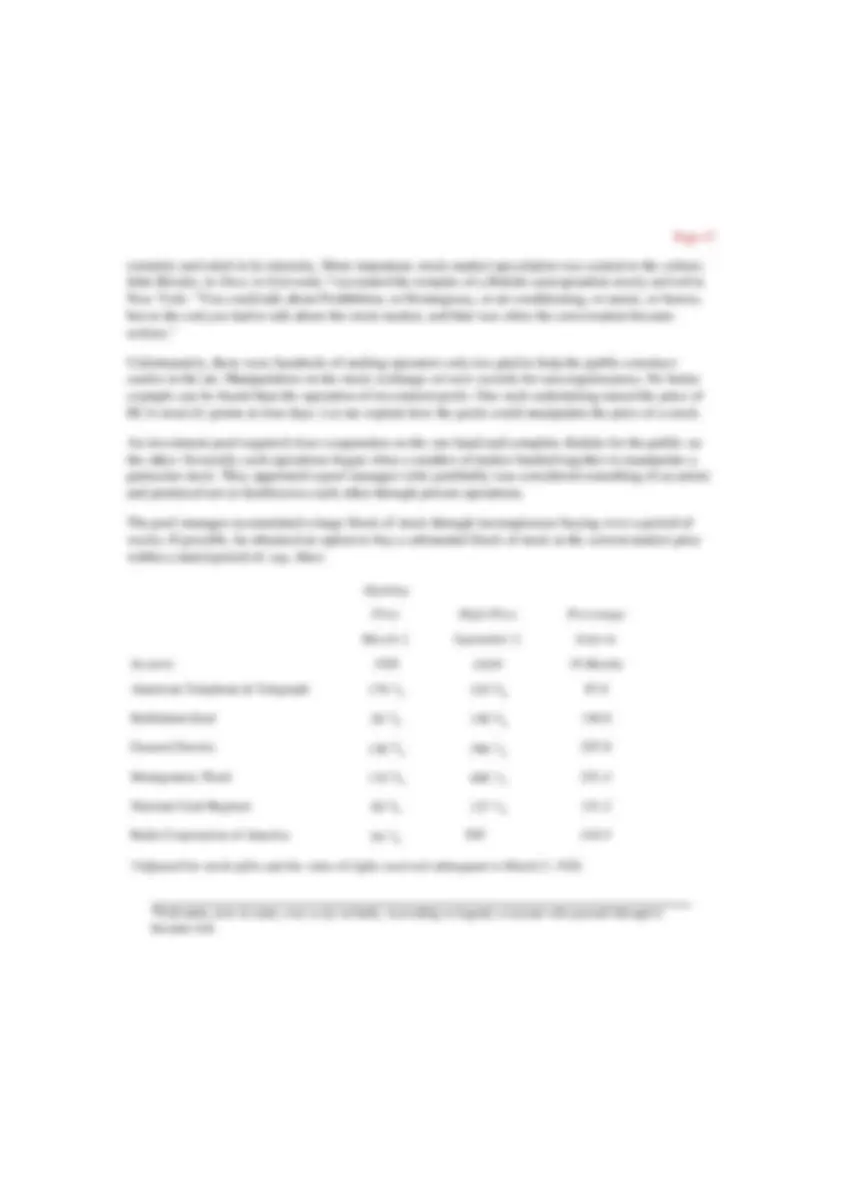




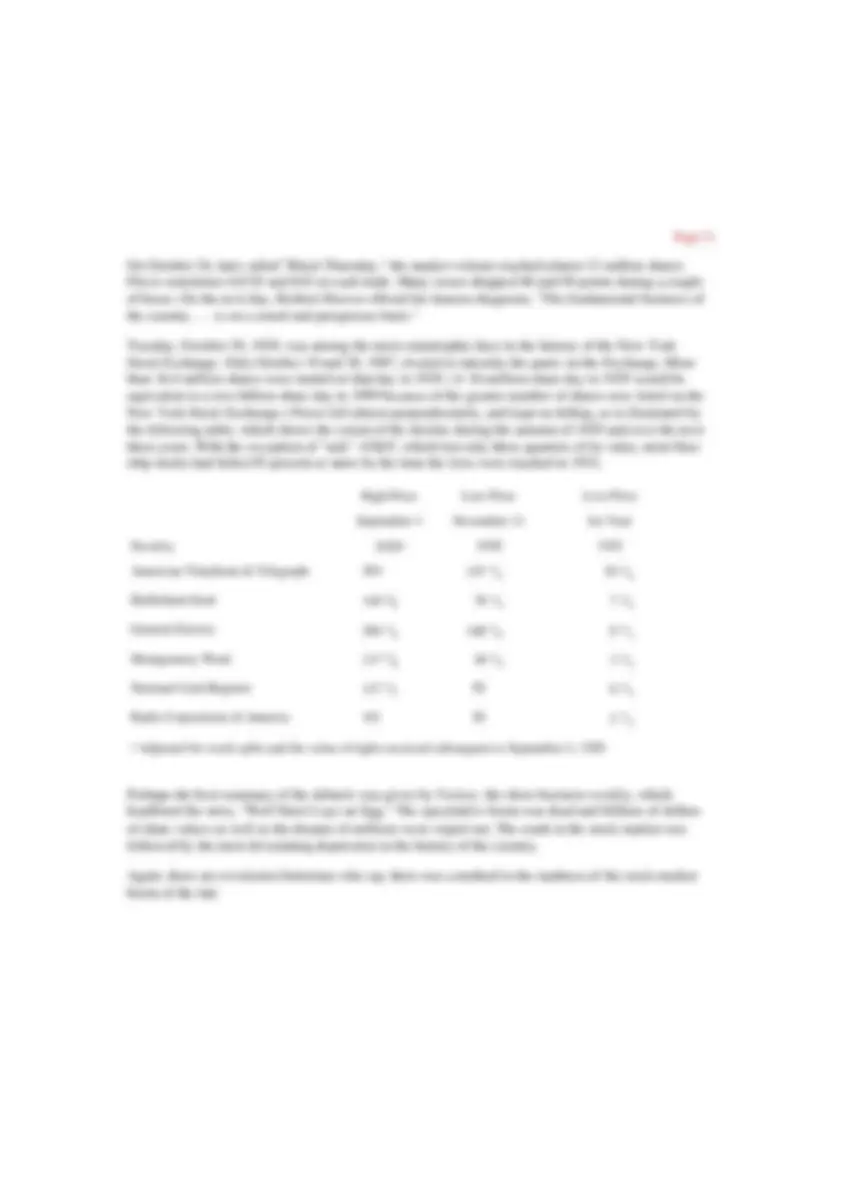







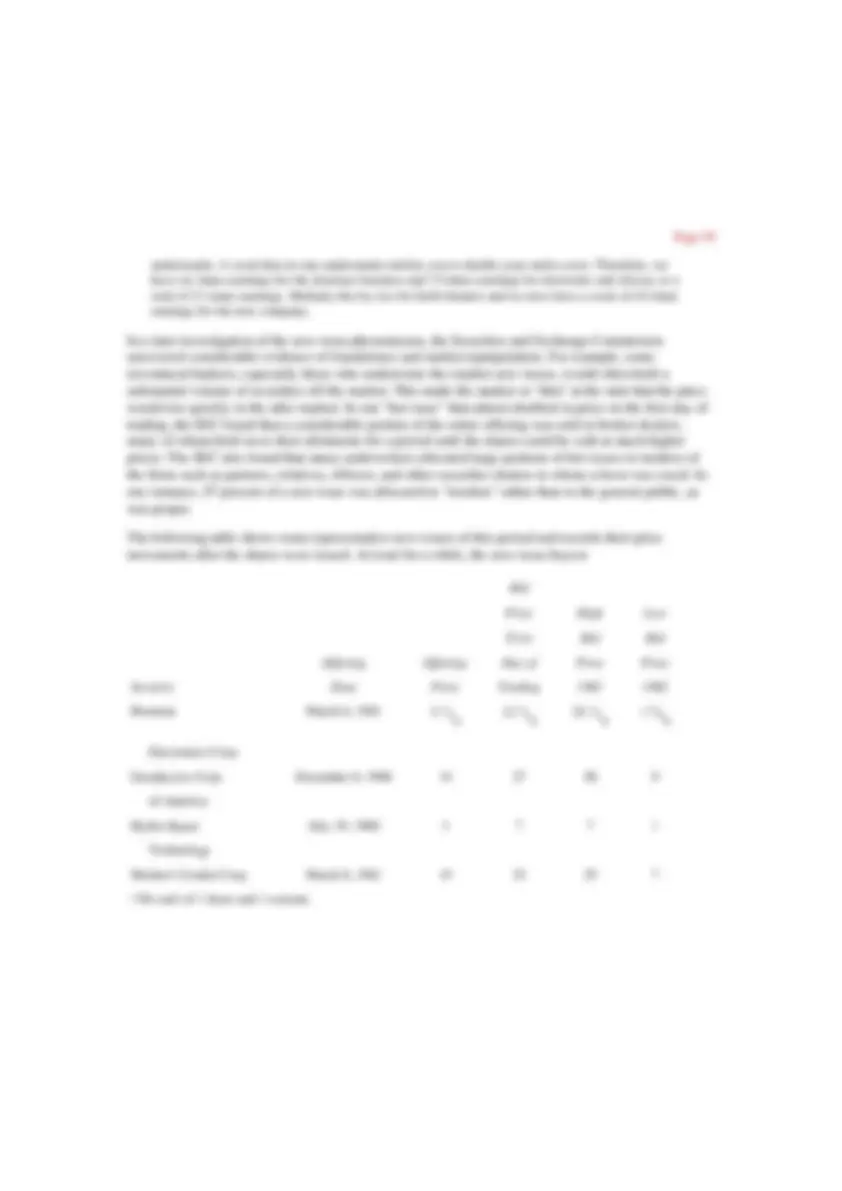




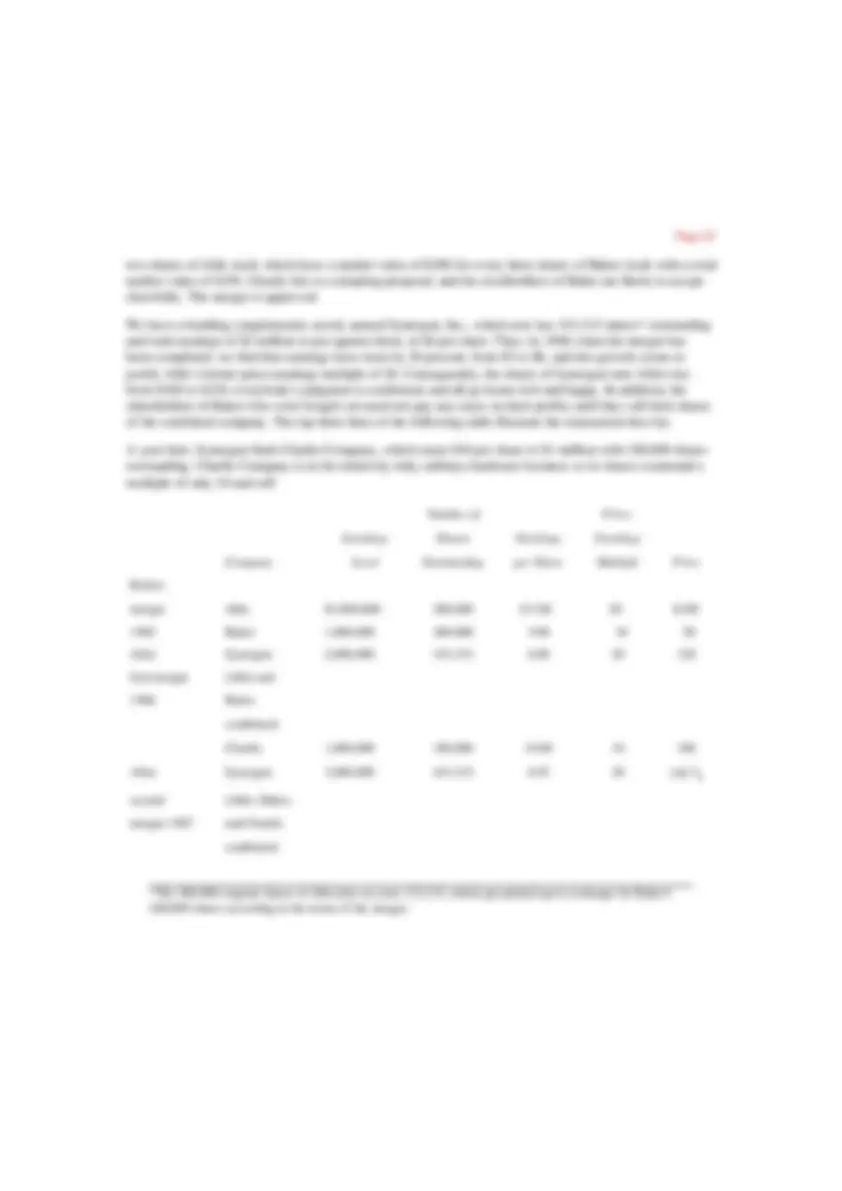

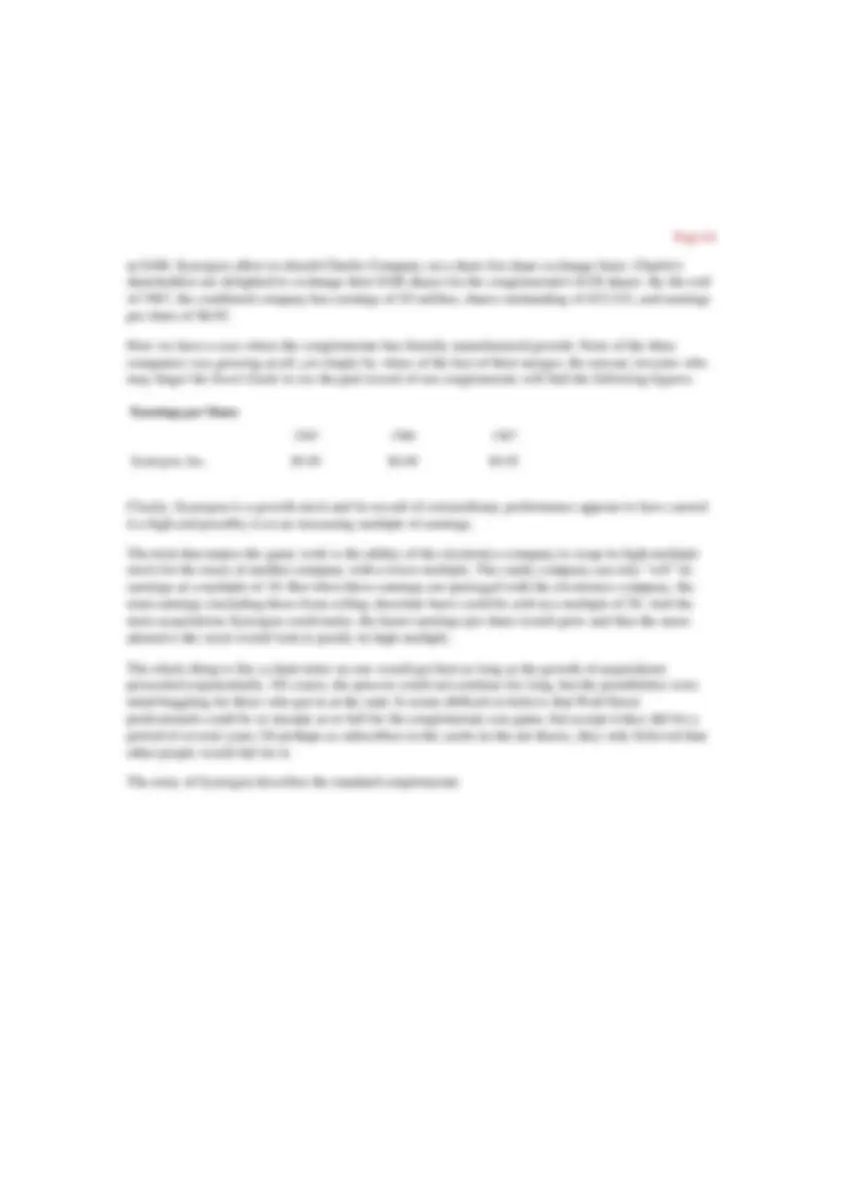


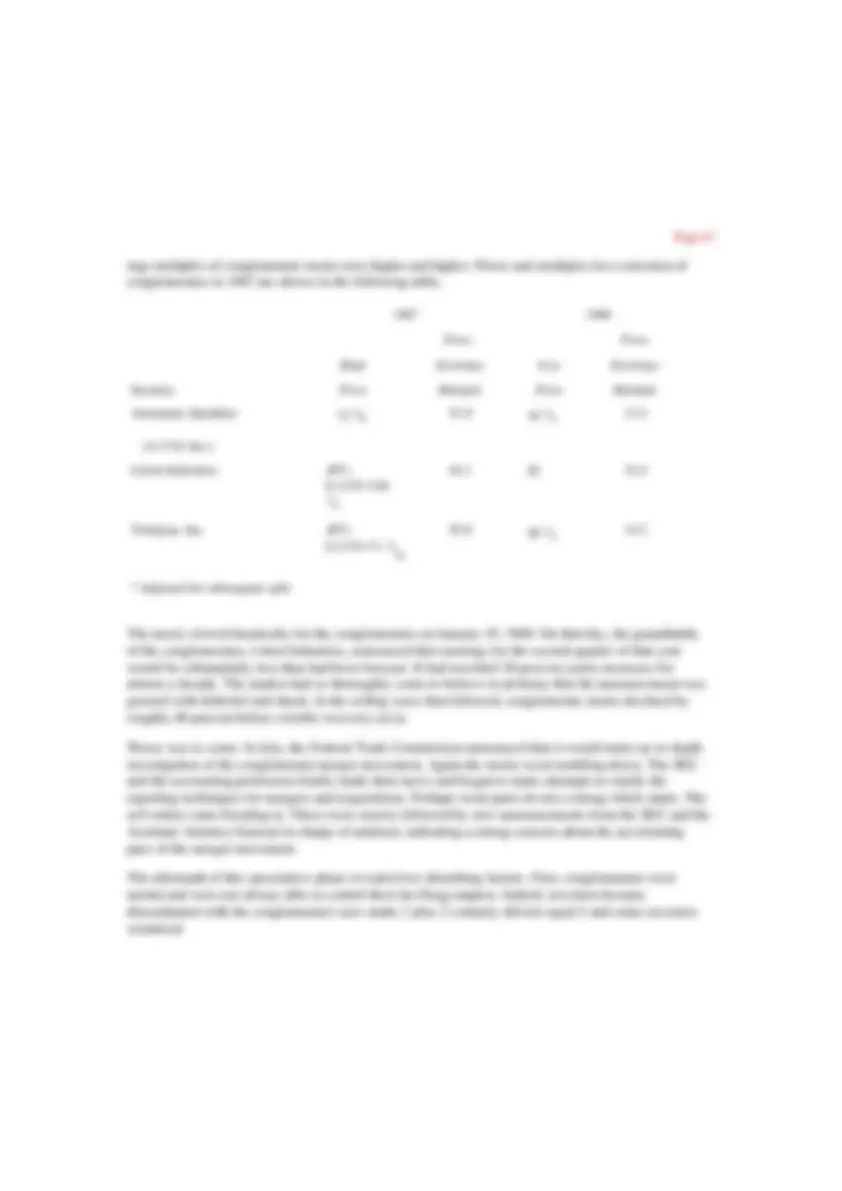



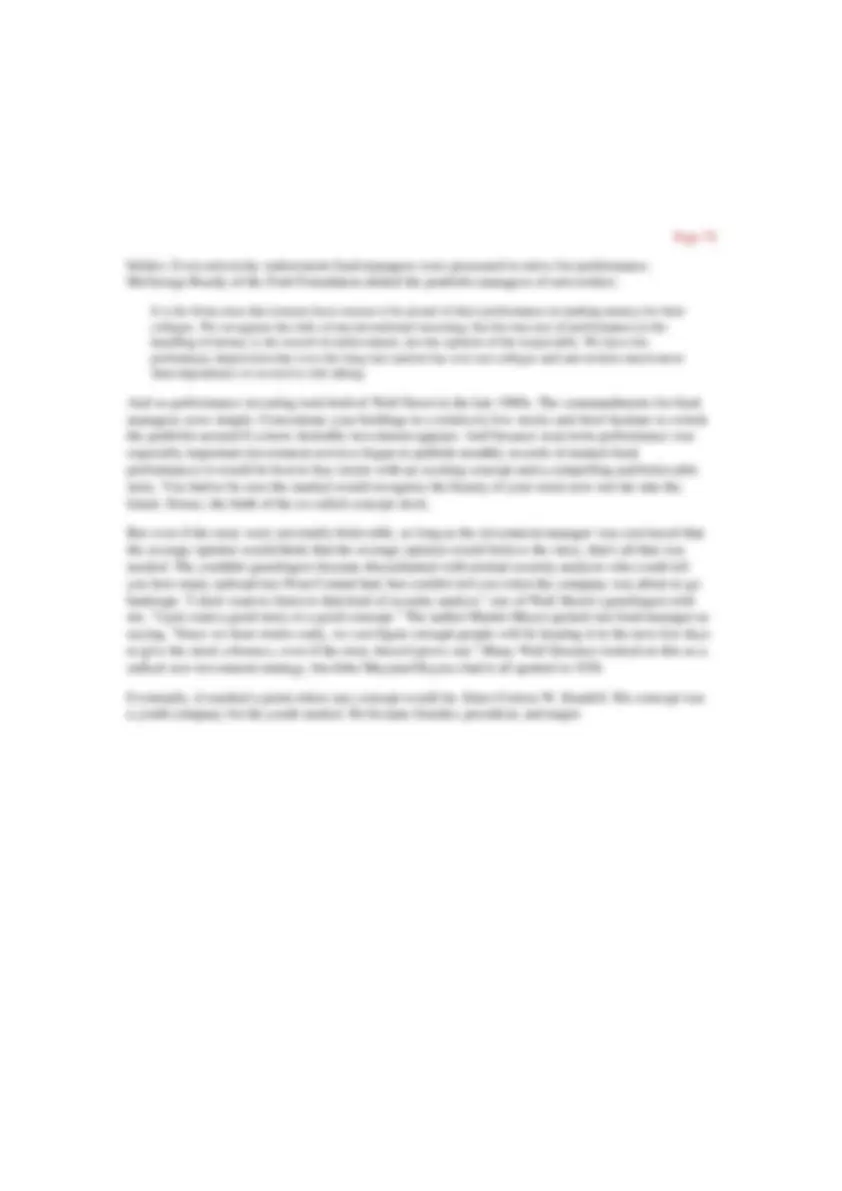

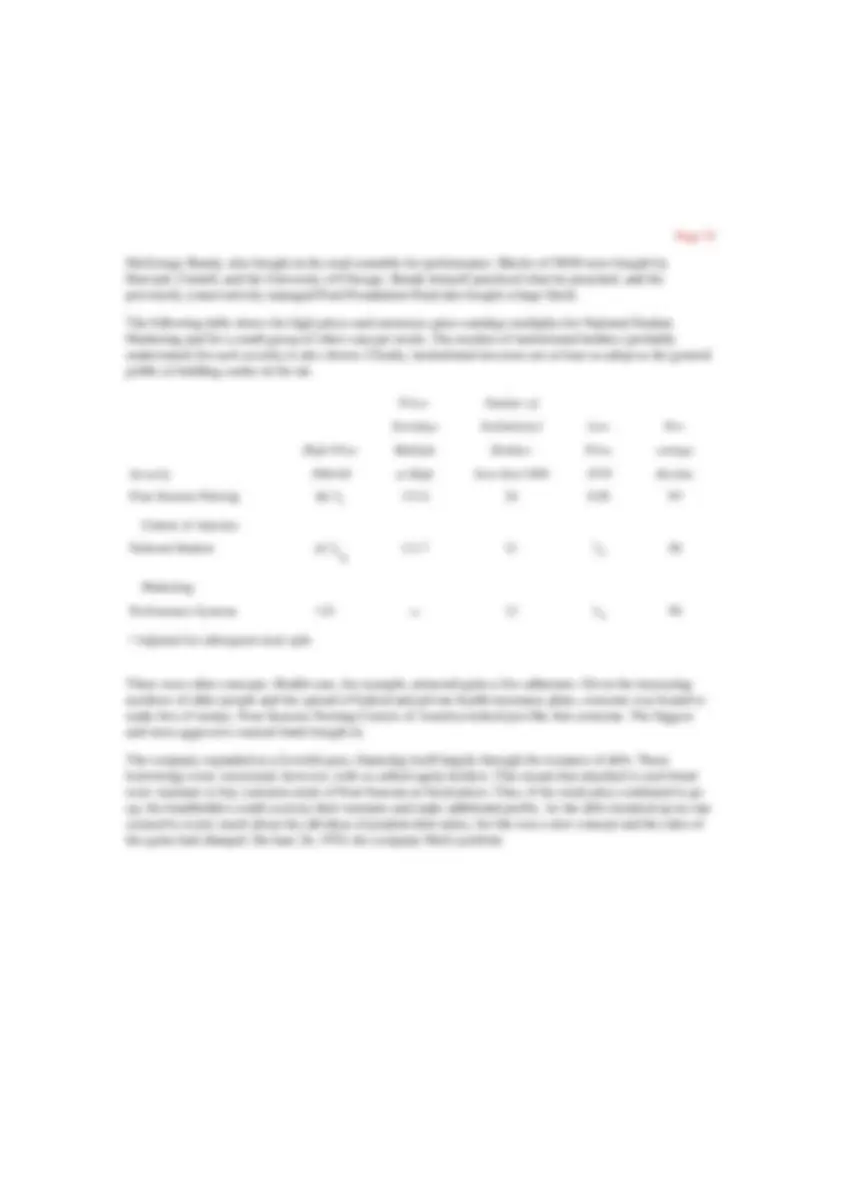
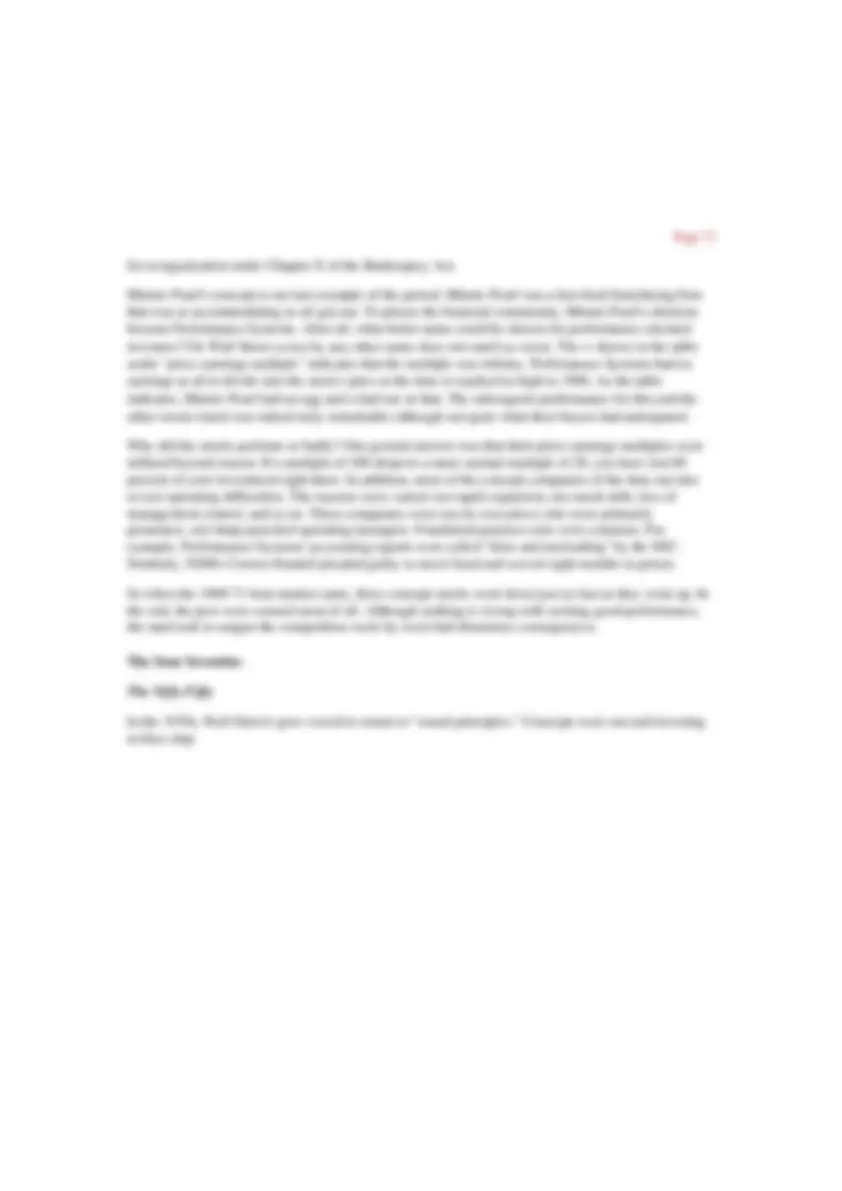

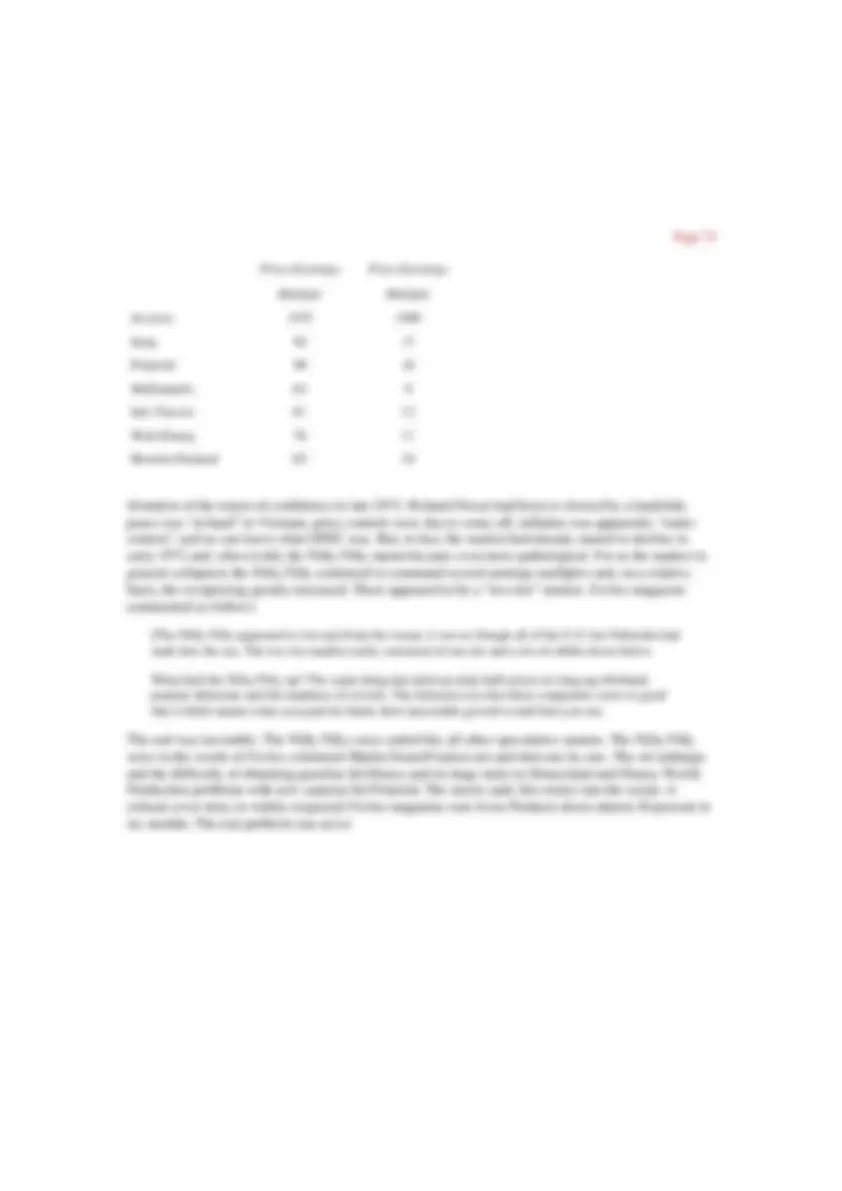




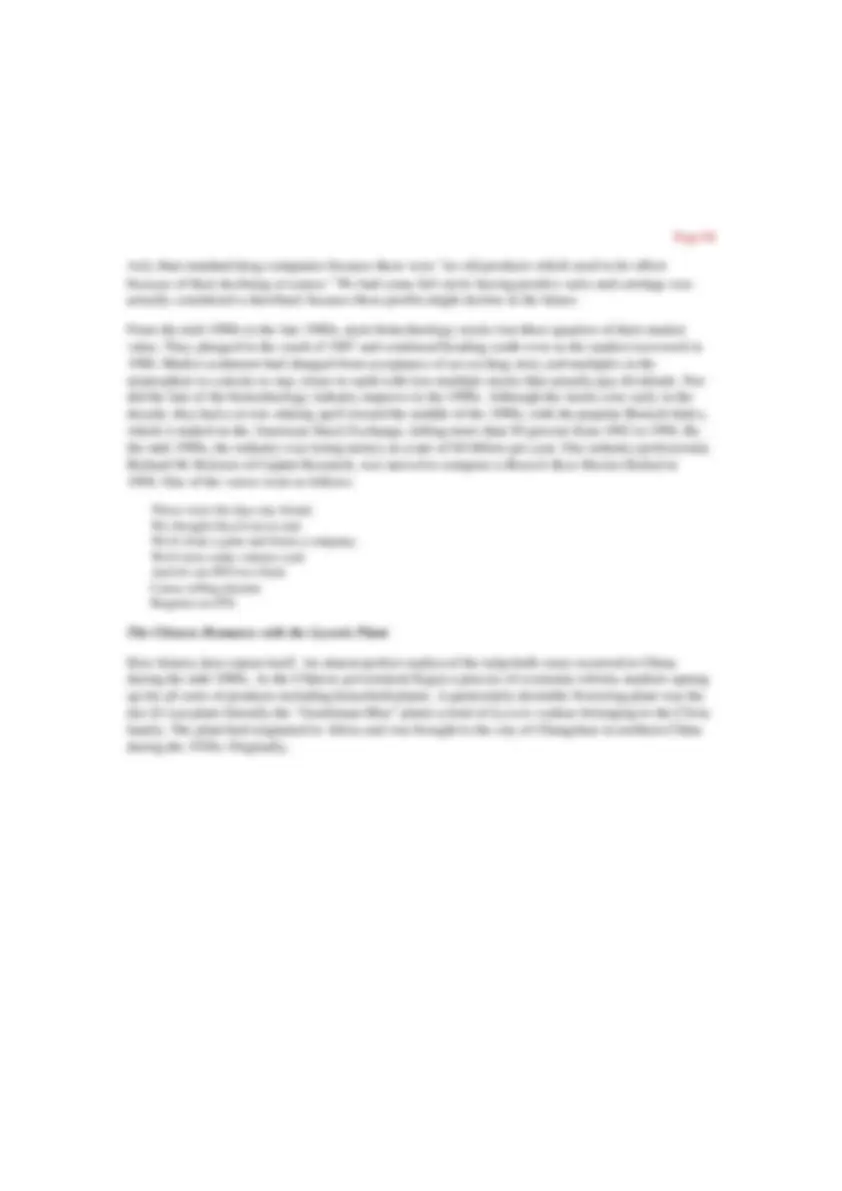








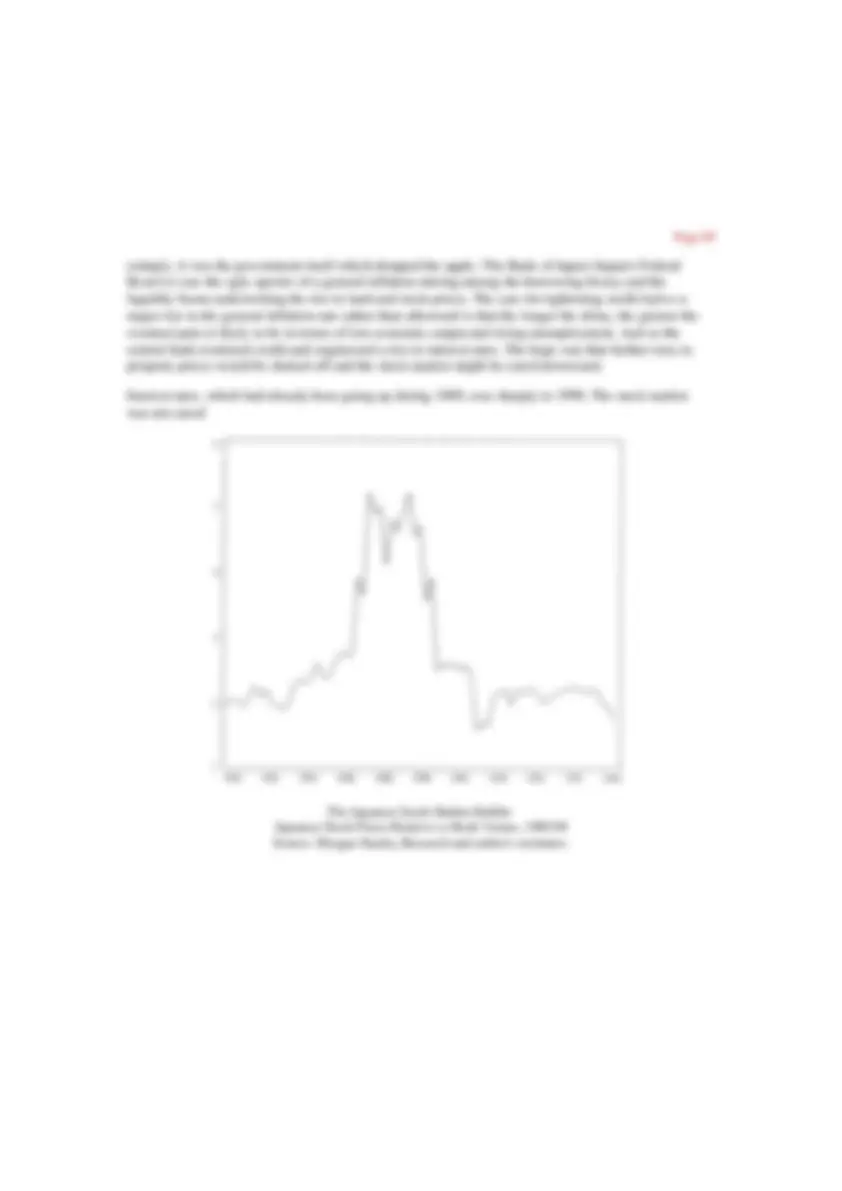



Study with the several resources on Docsity

Earn points by helping other students or get them with a premium plan


Prepare for your exams
Study with the several resources on Docsity

Earn points to download
Earn points by helping other students or get them with a premium plan
Community
Ask the community for help and clear up your study doubts
Discover the best universities in your country according to Docsity users
Free resources
Download our free guides on studying techniques, anxiety management strategies, and thesis advice from Docsity tutors
The unpredictability of stock market prices and the debate between technical and fundamental analysis. It explores the concept of intrinsic value, the impact of historical events on stock prices, and the limitations of past price behavior in predicting future movements. The text also touches upon the role of earnings and dividends in determining stock prices.
Typology: Papers
1 / 566

This page cannot be seen from the preview
Don't miss anything!





























































































Page 3
Burton G. Malkiel Chemical Bank Chairman's Professor of Economics At Princeton University
Page 5
To Nancy
Page 7
Preface 13
Acknowledgments from Earlier Editions
Part One Stocks and Their Value
What Is a Random Walk?
Investing as a Way of Life Today
Investing in Theory
The Firm-Foundation Theory
The Castle-in-the-Air Theory 31
How the Random Walk Is to Be Conducted
The Tulip-Bulb Craze
The Triumphant Return of New Issues
Concepts Conquer Again: The Biotechnology Bubble
Page 8
The Chinese Romance with the Lycoris Plant 80
Some Other Bubbles of the 1980s
What Does It All Mean?
The Nervy Nineties
The Japanese Yen for Land and Stocks
The Internet Craze of the Late 1990s
A Final Word
The "Fundamental" Determinants of Stock Prices
Two Important Caveats
Testing the Rules
One More Caveat
What's Left of the Firm Foundation?
Just What Exactly Is a Random Walk?
Some More Elaborate Technical Systems
The Filter System
The Dow Theory
The Relative-Strength System
Price-Volume Systems
Reading Chart Patterns
Randomness Is Hard to Accept
A Gaggle of Other Technical Theories to Help You Lose Money
Page 9
The Hemline Indicator 151
The Super Bowl Indicator 153
The Odd-Lot Theory 153
A Few More Systems 155
Technical Market Gurus 155
Why Are Technicians Still Hired? 159
Appraising the Counterattack 160
Implications for Investors 163
The Views from Wall Street and Academia 166
Are Security Analysts Fundamentally Clairvoyant? 166
Why the Crystal Ball Is Clouded 170
Page 10
The Capital-Asset Pricing Model (CAPM) 224
Let's Look at the Record
An Appraisal of the Evidence
The Quant Quest for Better Measures of Risk: Arbitrage Pricing Theory
A Summing Up
Predictable Patterns in the Behavior of Stock Prices
Predictable Relationships between Certain "Fundamental" Variables and Future Stock Prices
And the Winner Is...
The Performance of Professional Investors
Concluding Comments
Appendix: The Market Crash of October 1987
Part Four A Practical Guide for Random Walkers and Other Investors
Exercise 1: Cover Thyself with Protection
Exercise 2: Know Your Investment Objectives
Exercise 3: Dodge Uncle Sam Whenever You Can
Pension Plans and IRAs
Page 11
Tax-Deferred Annuities
Exercise 4: Be Competitive; Let the Yield on Your Cash Reserve Keep Pace with Inflation
Money-Market Mutual Funds 295
Money-Market Deposit Accounts 297
Bank Certificates 299
Tax-Exempt Money-Market Funds 300
Exercise 5: Investigate a Promenade through Bond Country 301
Zero-Coupon Bonds Can Generate Large Future Returns 302
No-Load Bond Funds Are Appropriate Vehicles for Individual Investors 303
Tax-Exempt Bonds Are Useful for High-Bracket Investors 305
Hot TIPS: Inflation Indexed Bonds 307
Should You Be a Bond-Market Junkie? 309
Exercise 6: Begin Your Walk at Your Own Home; Renting Leads to Flabby Investment Muscles
Exercise 7: Beef Up with Real Estate Investment Trusts 313
Exercise 8: Tiptoe through the Investment Fields of Gold and Collectibles 318
Exercise 9: Remember that Commission Costs Are Not Random Some Are Cheaper than Others
Exercise 10: Diversify Your Investment Steps 324
A Final Checkup 324
What Determines the Returns from Stocks and Bonds? 326
Three Eras of Financial Market Returns 331
Era I: The Age of Comfort 333
Era II: The Age of Angst 334
Era III: The Age of Exuberance 340
The Age of the Millennium 342
Appendix: Projecting Returns for Individual Stocks 347
Four Asset Allocation Principles 352
Page 13
It has now been close to thirty years since I began writing the first edition of A Random Walk Down Wall Street. The message of the original edition was a very simple one: Investors would be far better off buying and holding an index fund than attempting to buy and sell individual securities or actively managed mutual funds. I boldly stated that buying and holding all the stocks in a broad, stock-market average as index funds do was likely to outperform professionally managed funds whose high expense charges and large trading costs detract substantially from investment returns.
Now, some thirty years later, I believe even more strongly in that original thesis, and there's more than a six-figure gain to prove it. The chart on the following page makes the case with great simplicity. It shows how an investor with $10,000 at the start of 1969 would have fared investing in a Standard & Poor's 500-Stock Index Fund. For comparison, the results are also plotted for a second investor who instead purchased shares in the average actively managed fund. The difference is dramatic. Through June 30, 1998, the index investor was ahead by almost $140,000, with her original $10,000 increasing thirty-one-fold to $311,000. And the index returns were calculated after deducting the typical expenses (2/10 of 1 percent) charged for running an index fund.